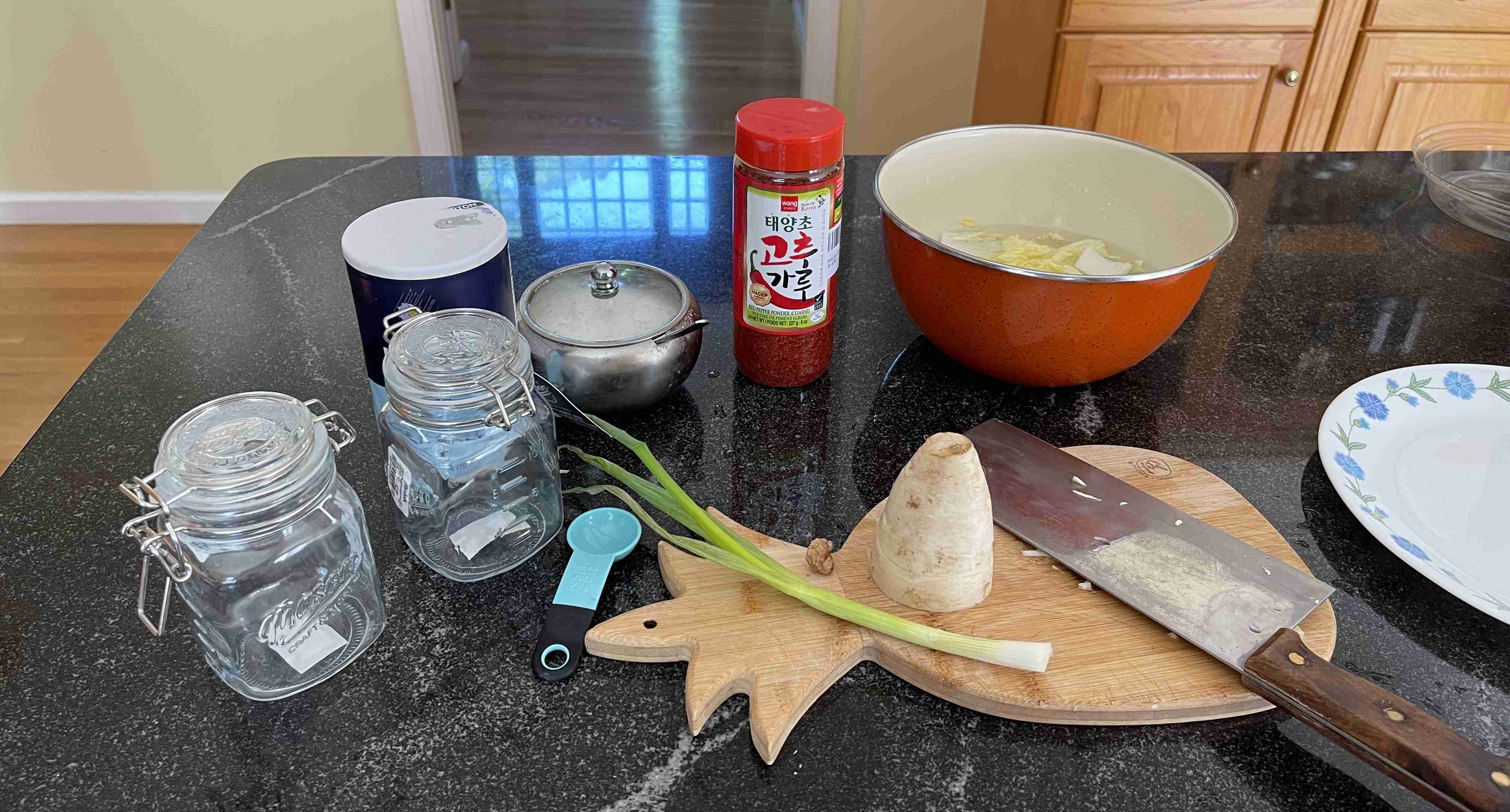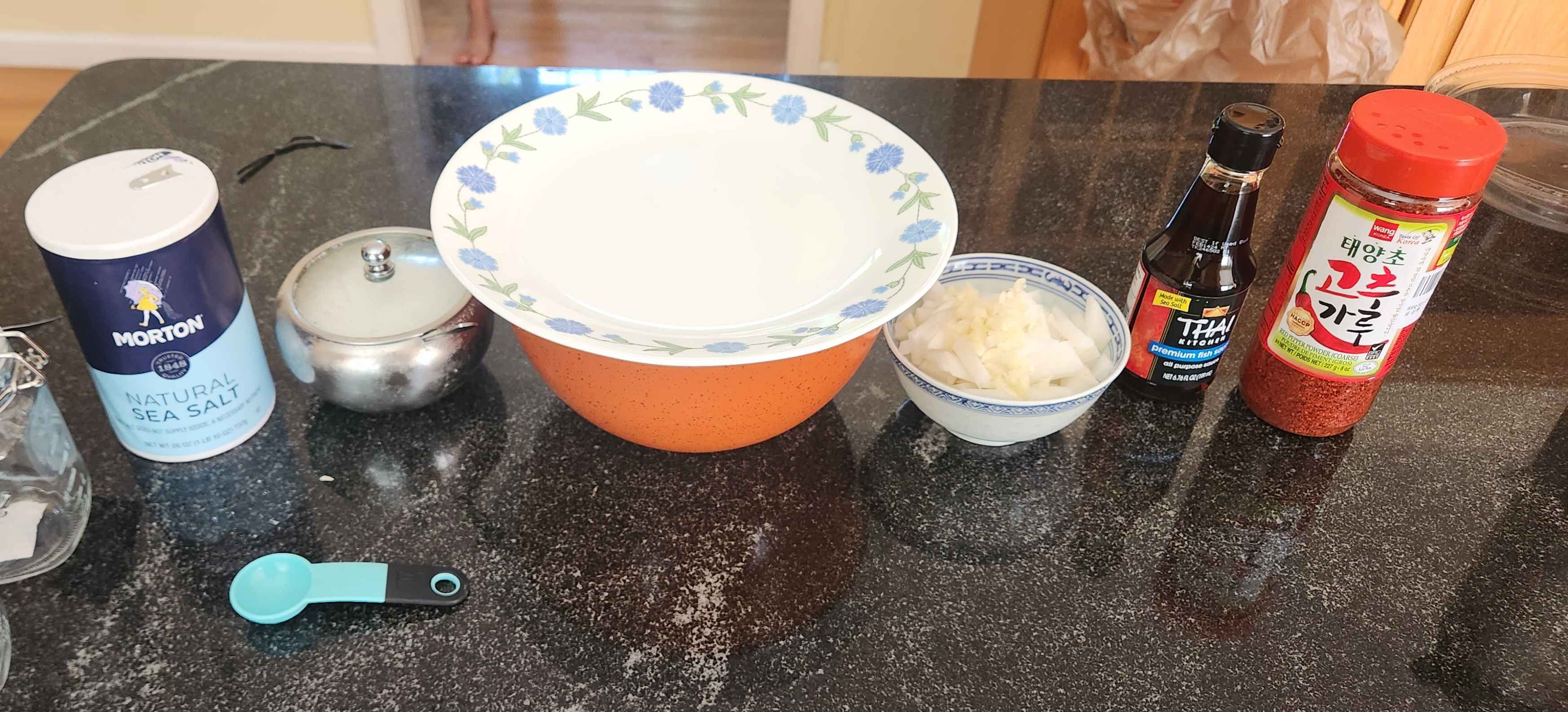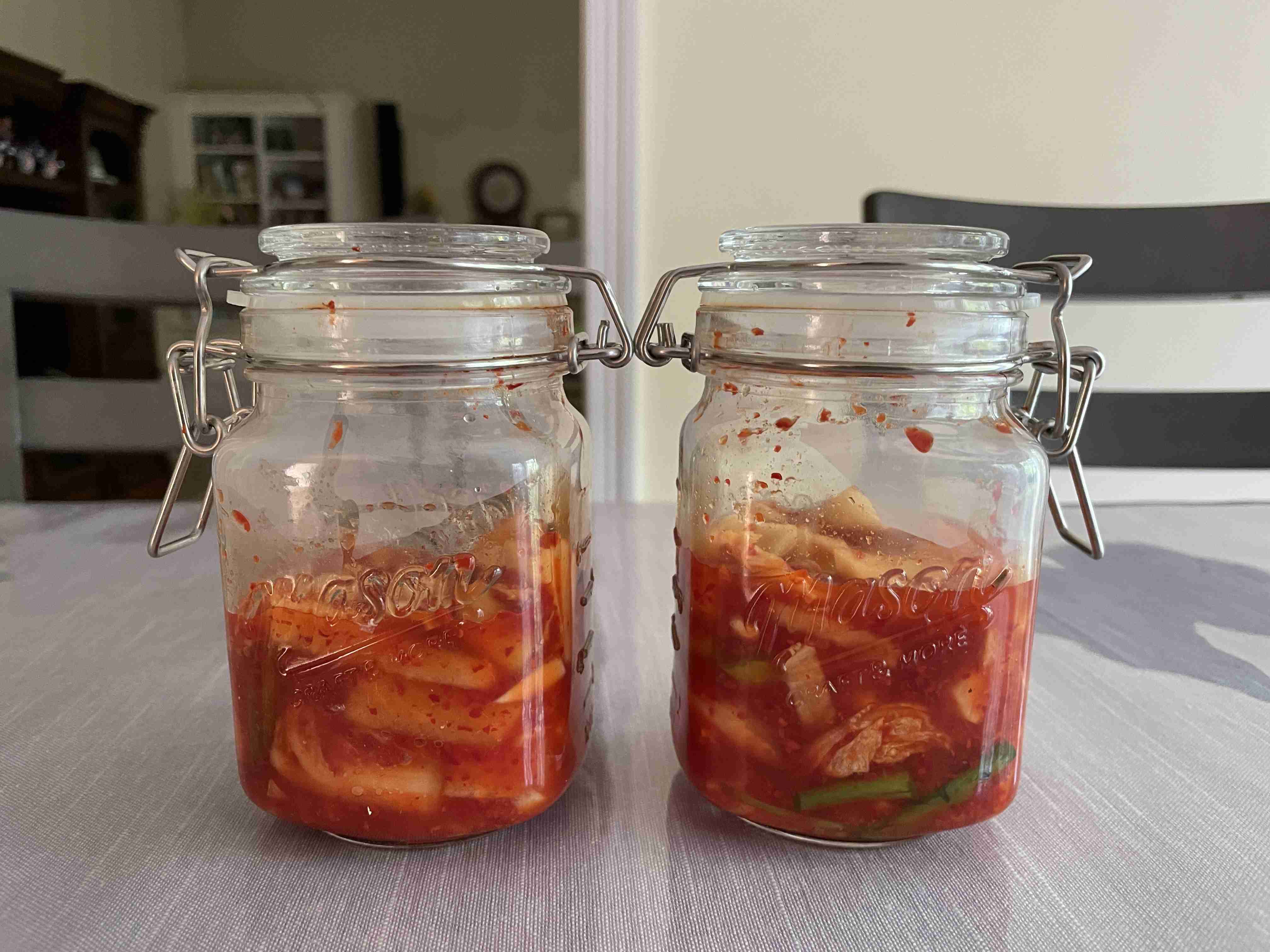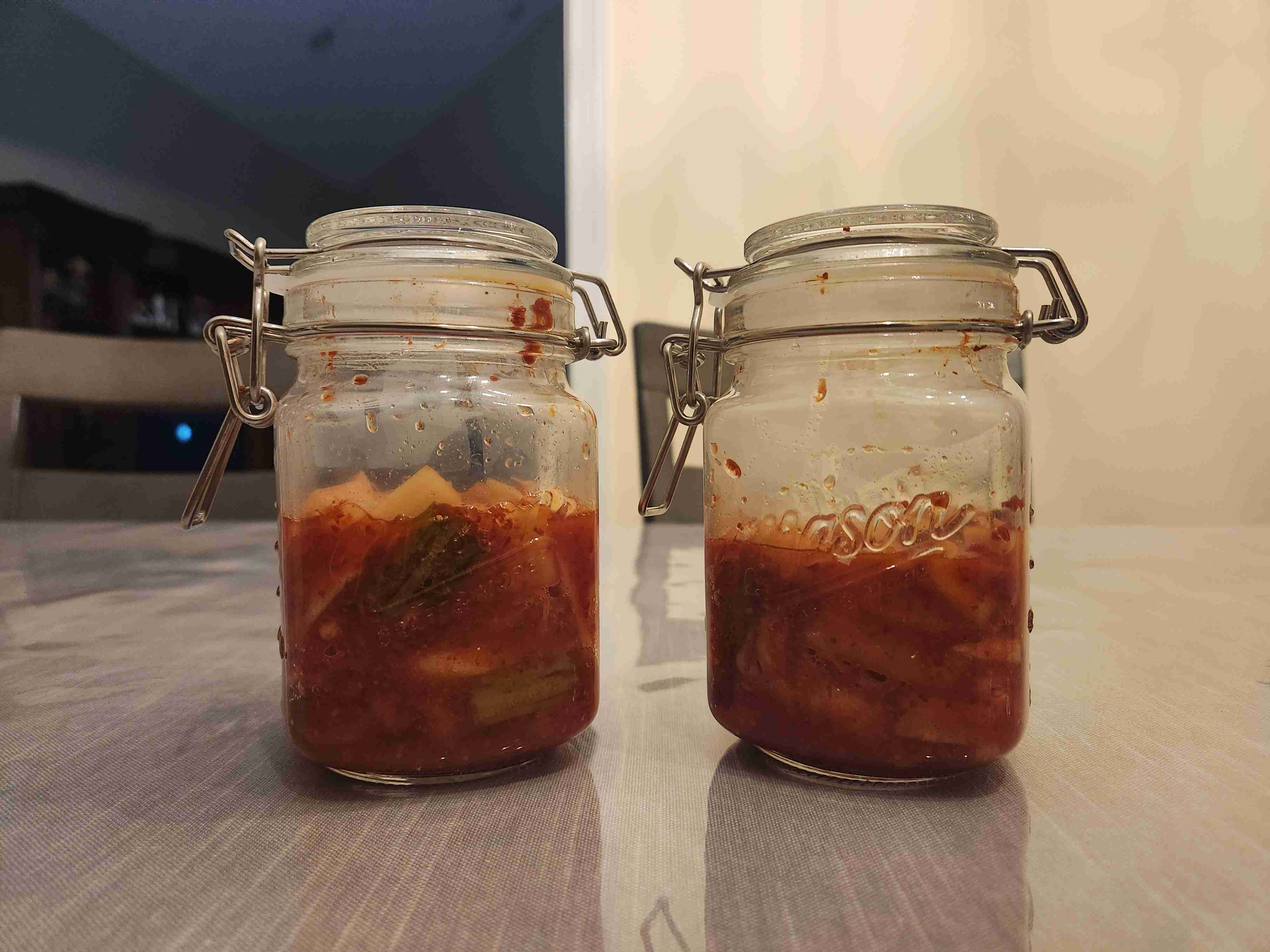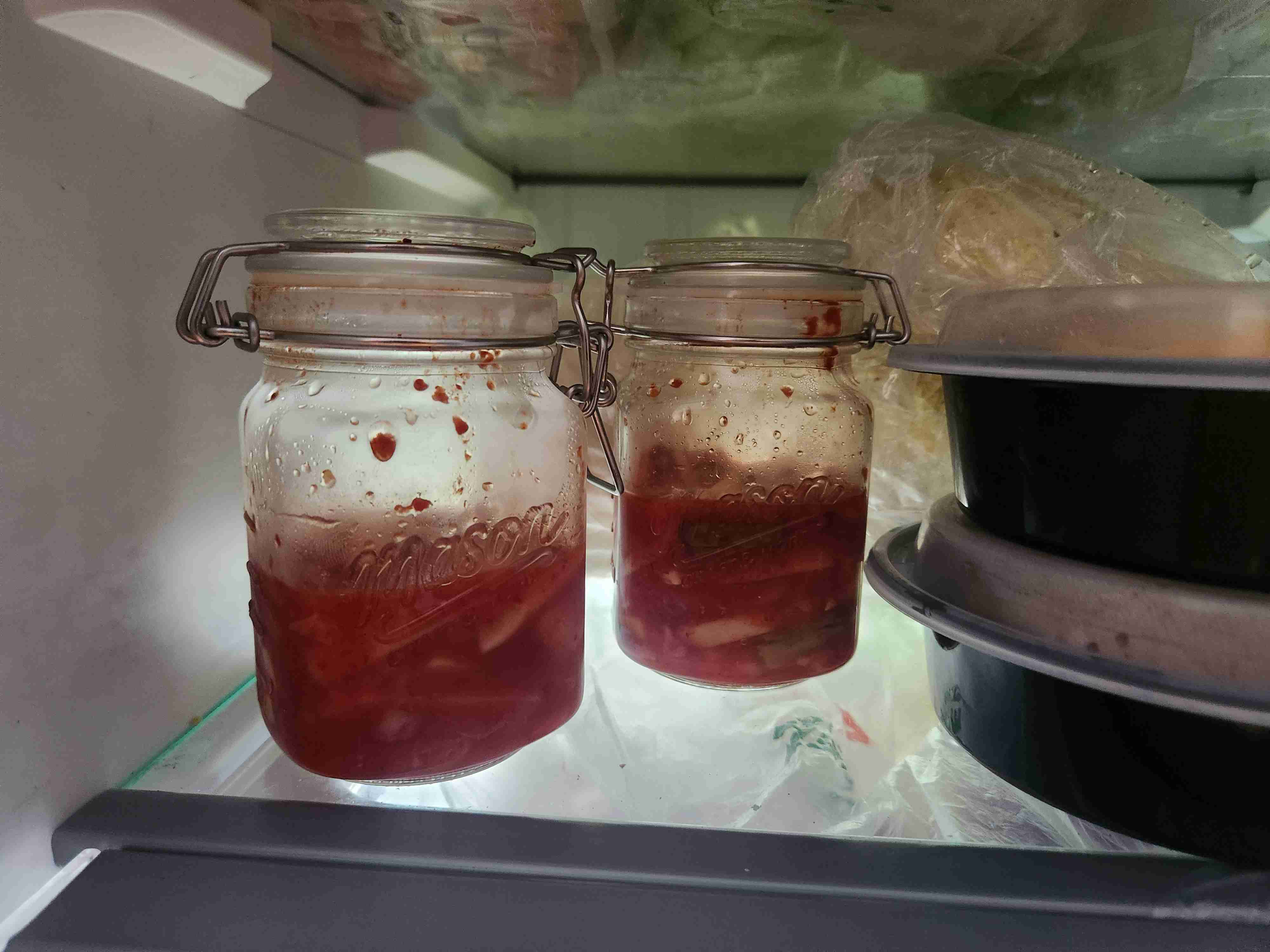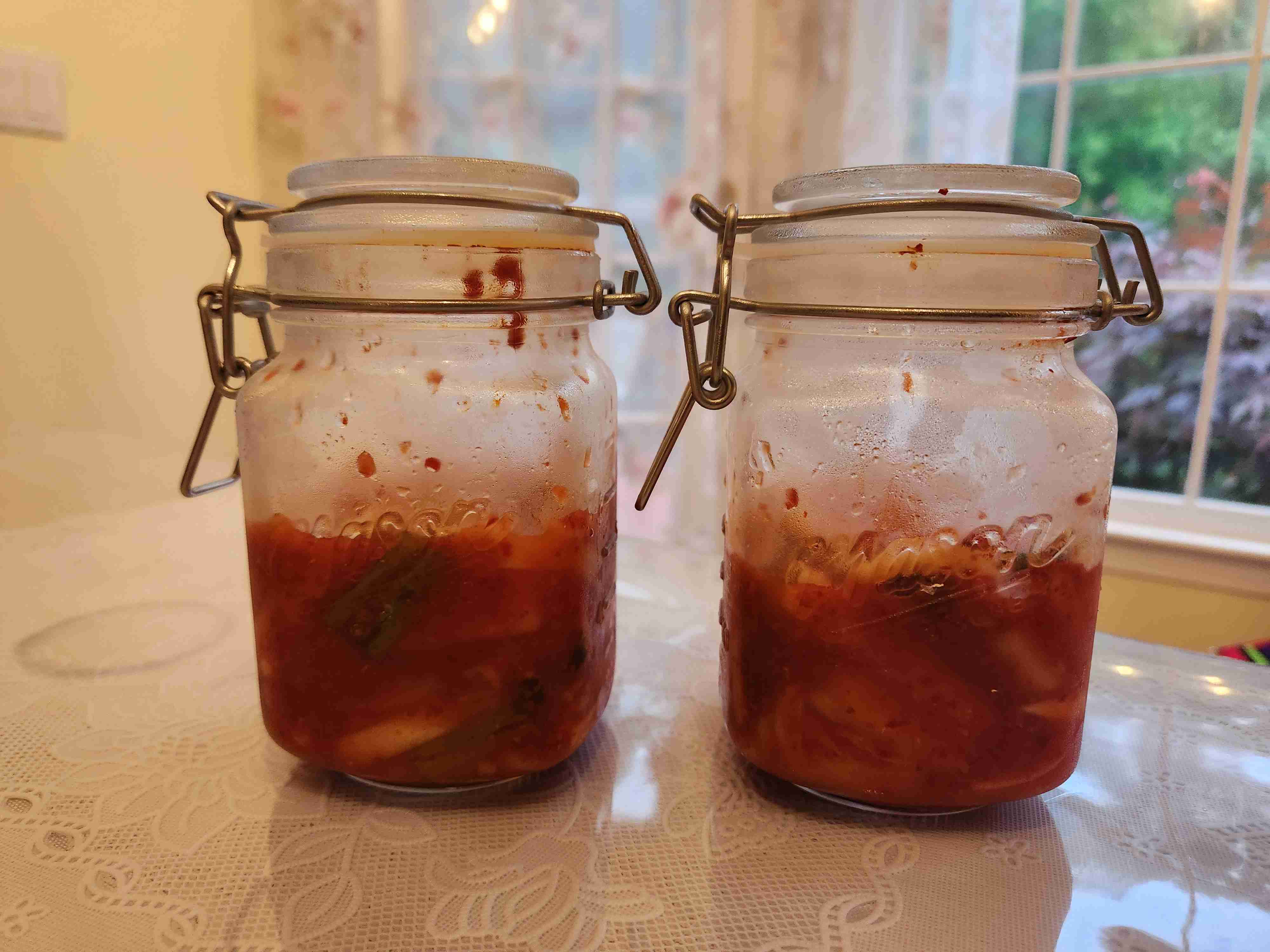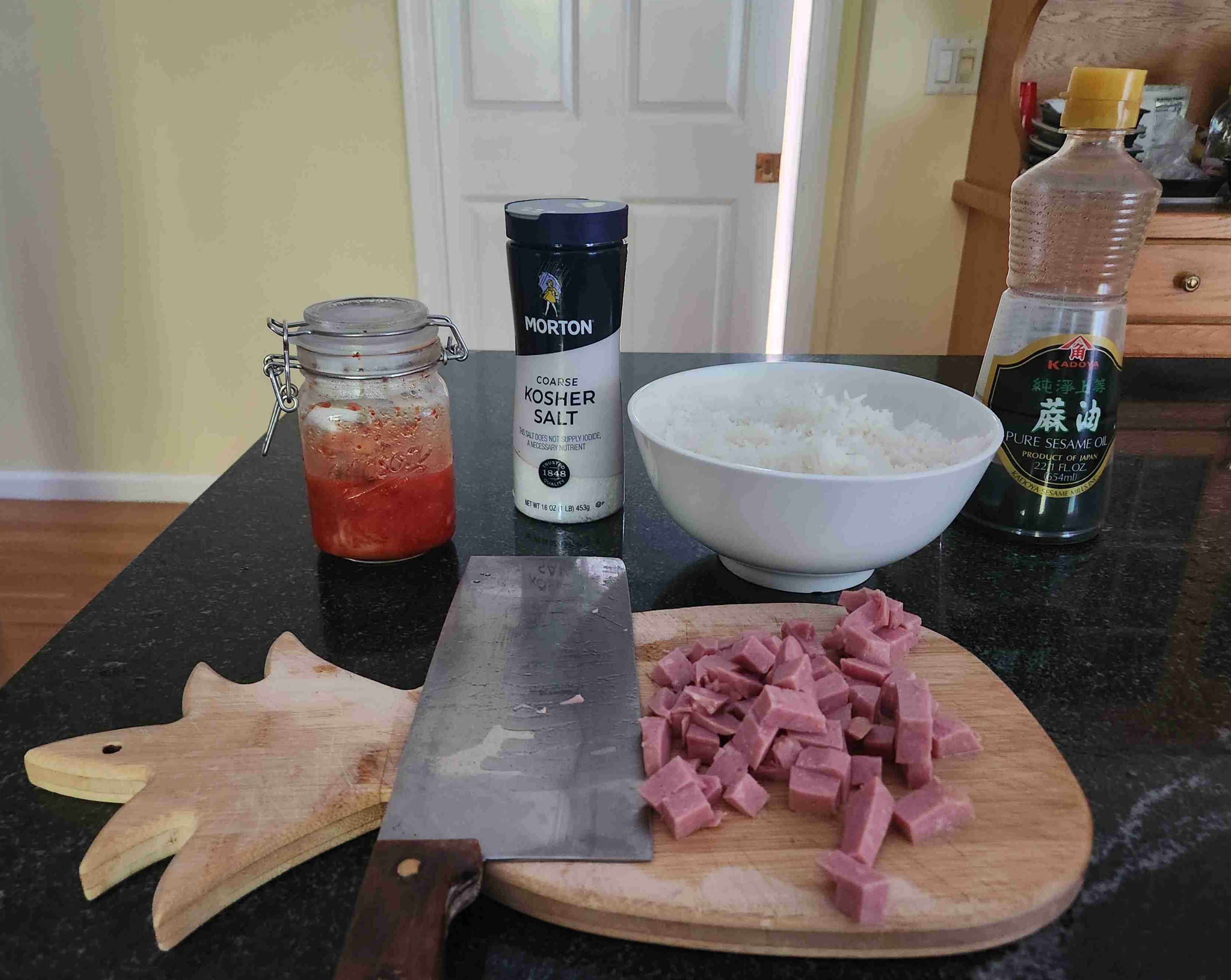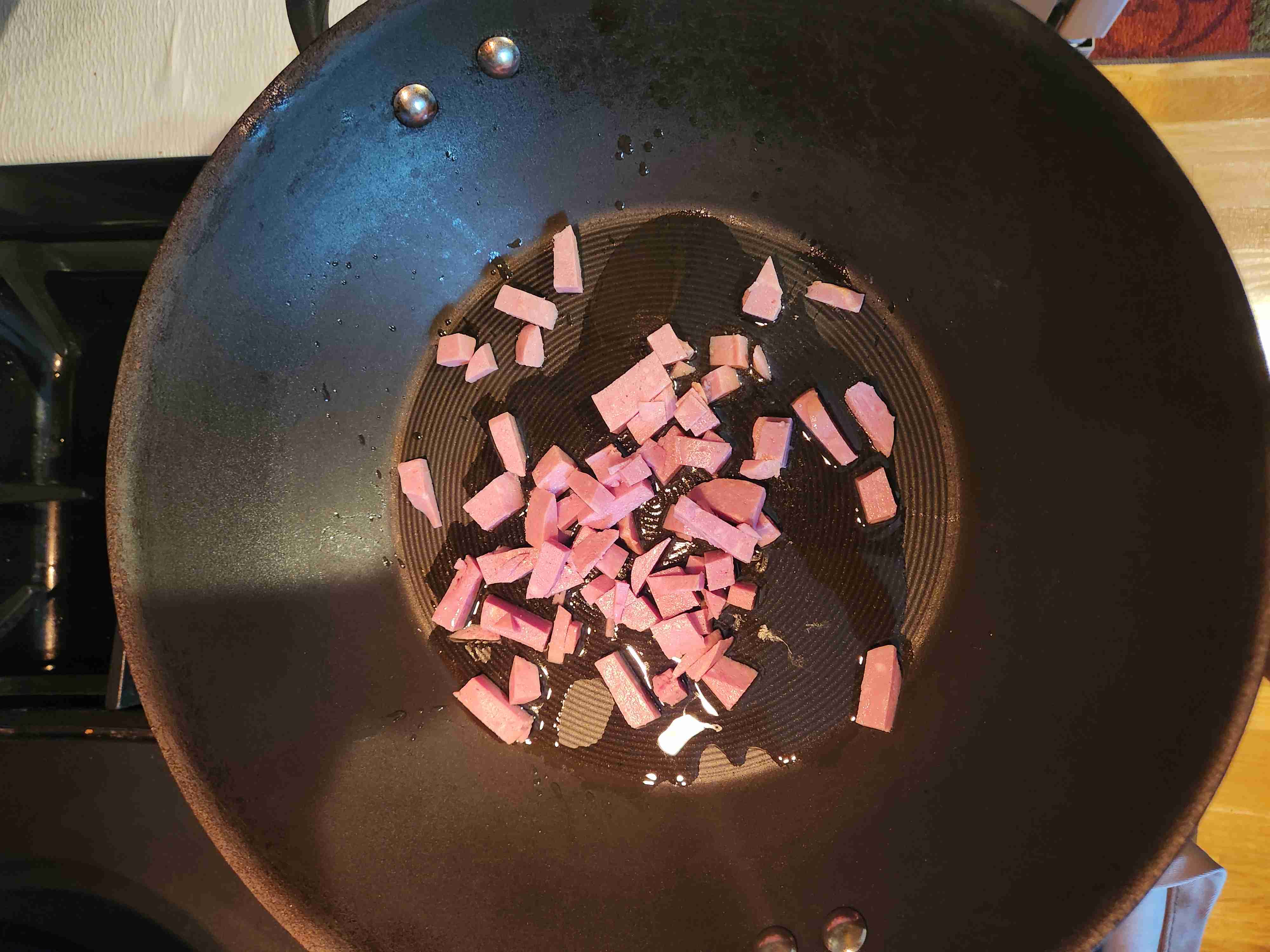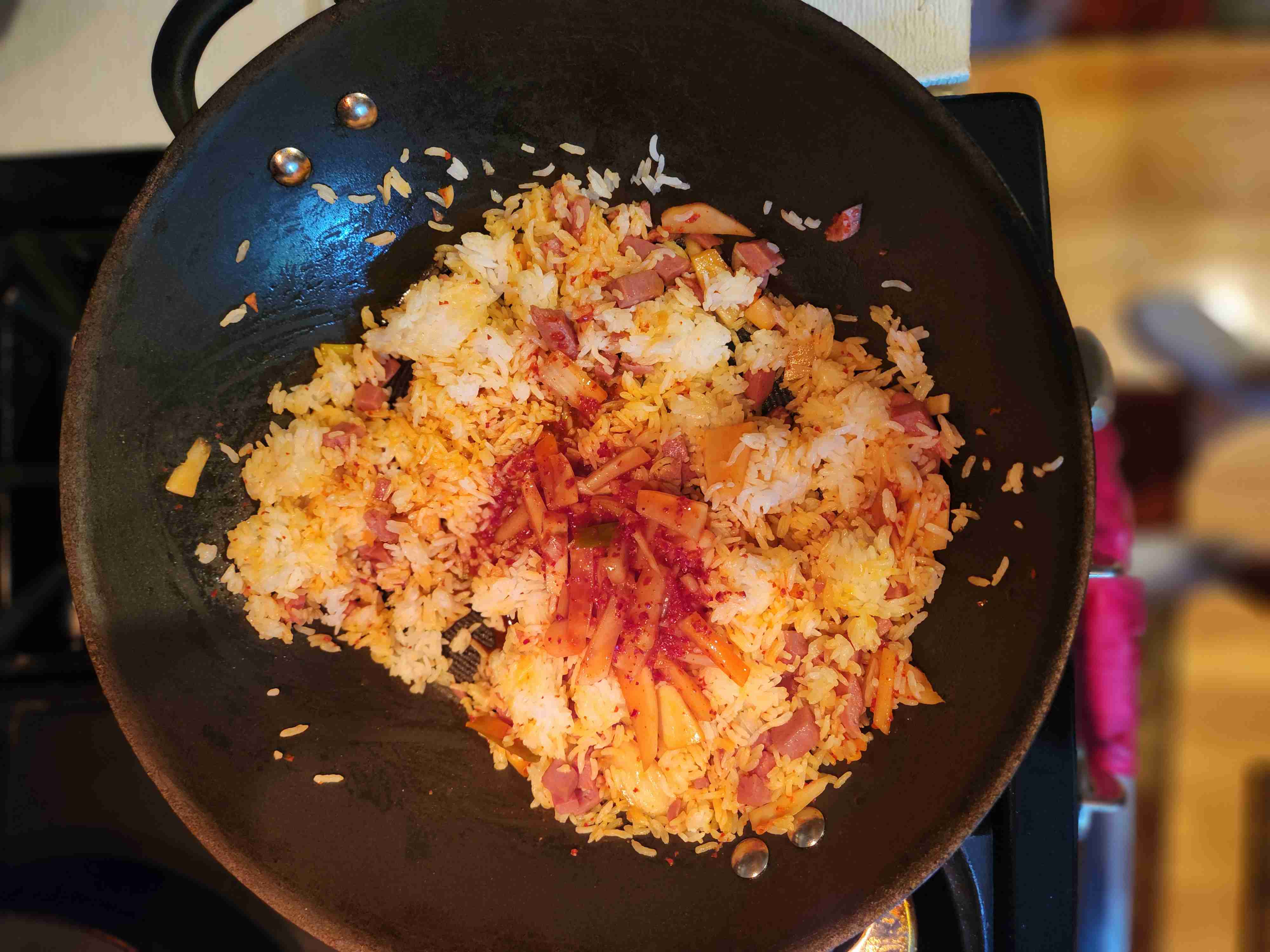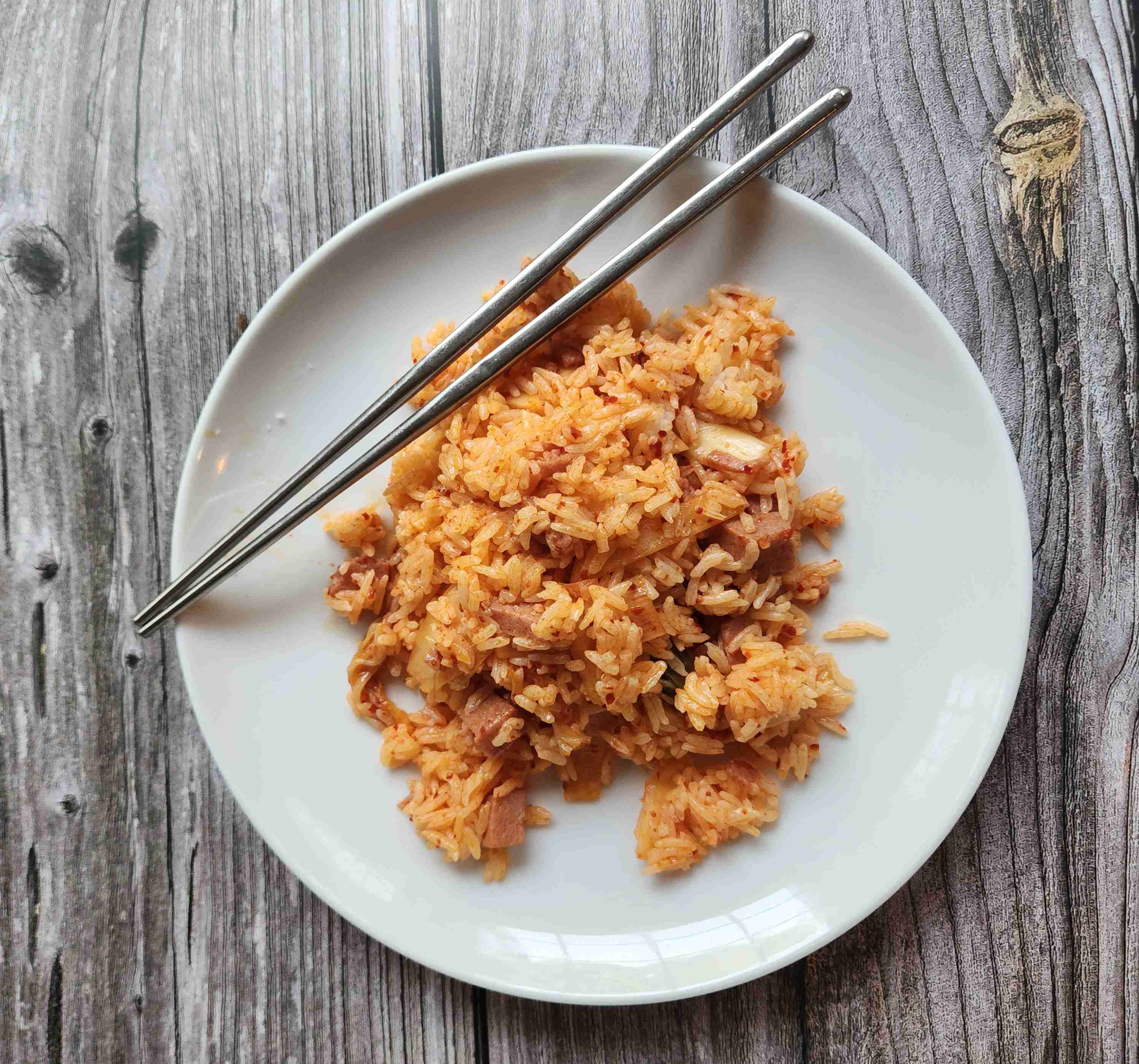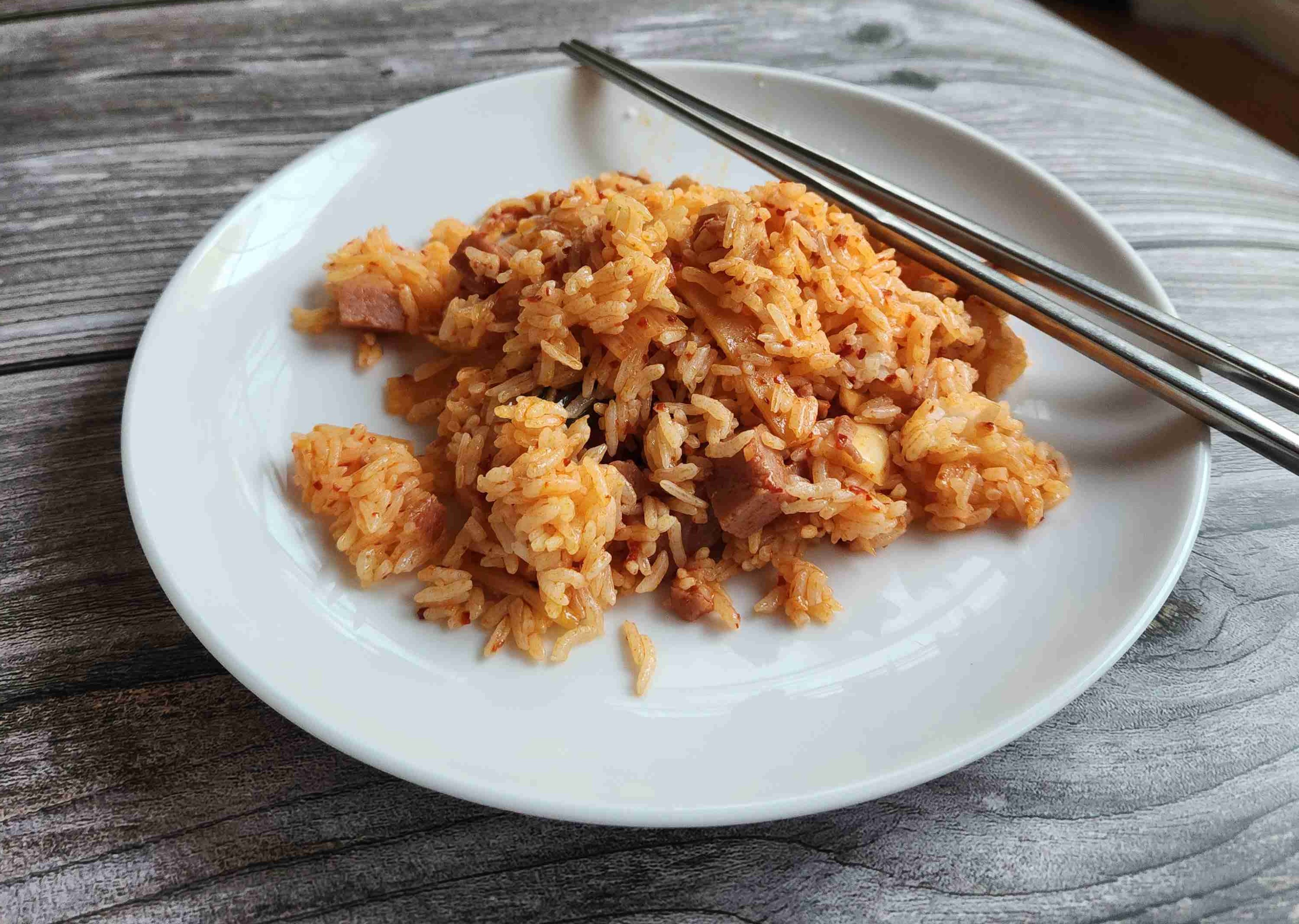Kimchi (and Fried Rice) (Korea)
-
4 servings
-
3 hours
-
Emily Han | the kitchn
-
Meat
-
Spicy
-
Salty
-
Umami
Cooked on July 5-11, 2023.
My seventh recipe! I have never made fermented foods (pickles, kimchi, etc) before and this was definitely a first. This recipe used many Asian ingredients, which are sometimes a pain in the rear end to obtain (such as gochugaru spice). The outcome came out pretty well, although I think I can balance out the cabbage and radish portions better if I made it again (which I definitely will!).
Rating 8/10, I love the umami and sour taste combined as well as the light spice from the gochugaru. I also really liked the fried rice, which came out very well without any external seasoning.
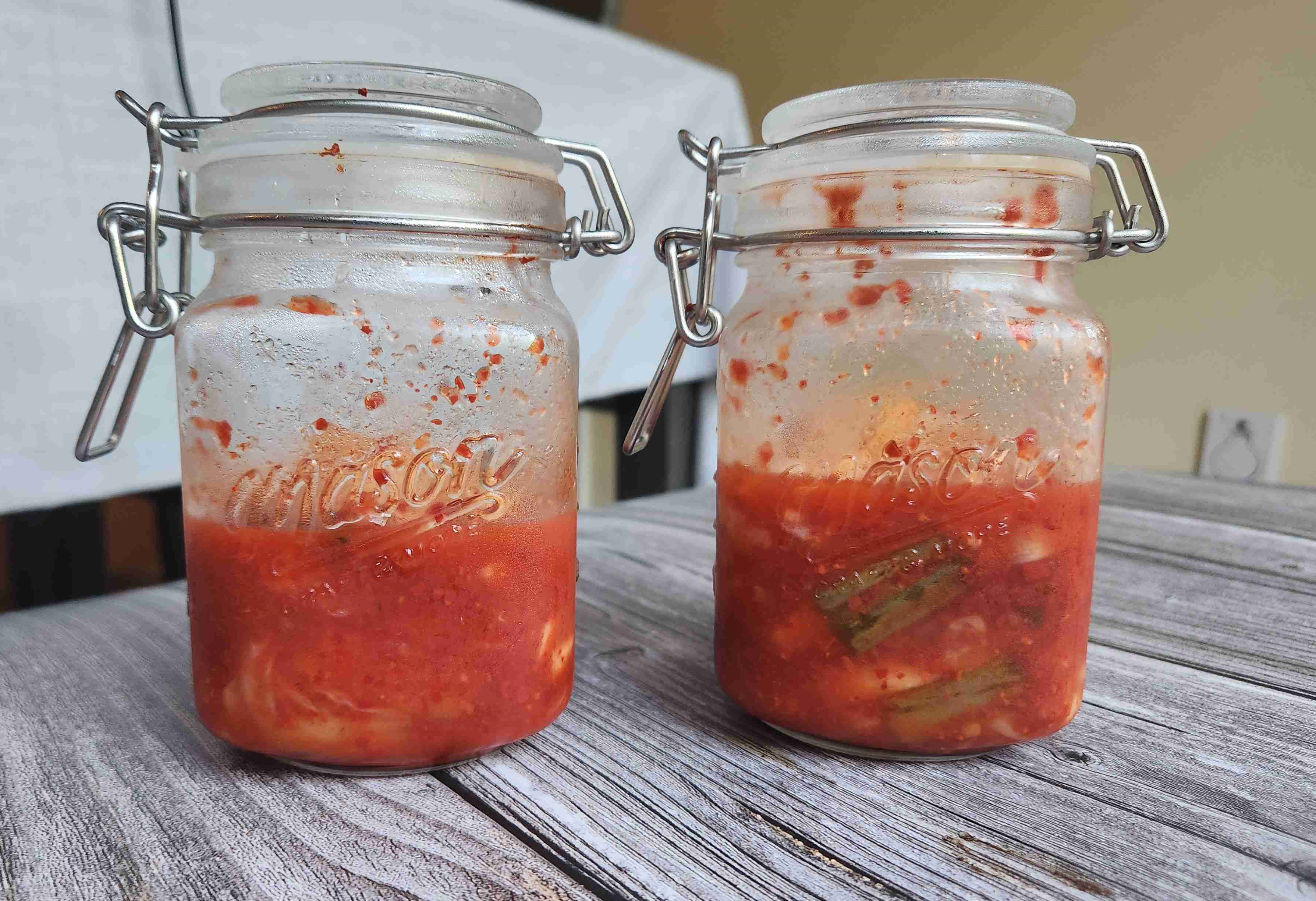
Preparation
1/2medium-sized napa cabbage2 tbspsea salt- Water
2 clovesgarlic (minced)1/2 inginger (minced)1/2 tspsugar2 tbspfish sauce (Thai Kitchen) or3 tbspspring water for a vegan alternative2.5 tbspgochugaru (Korean red pepper flakes)4.5 ozdaikon radish (peeled and cut into matchsticks)2 scallions(trimed and cut into 1-inch pieces)
Cut the cabbage into a half through the center. Then, cut the cabbage half through the stem into quarters. Cut the core out. Then, cut each quarter crosswise into 2-in wide strips.
Salt the cabbage. Place the cabbage into a large bowl and mix in the salt well. Massage the salt into the cabbage and add water to cover. Cover and let sit for 1 hour.
Rinse and drain the cabbage under cold water. Let dry in a colander for 15 minutes.
Use spring water for best results! Chlorinated water (or tap water) can prevent fermentation.
Rinse and dry the bowl used for salting. Add garlic, ginger, sugar, fish sauce, and stir into smooth paste. Then, stir in gochugaru. Set aside.
Squeeze any remaining water from the cabbage and add it to the spice paste. Add radish and scallions.
Mix all of the vegetables together until thoroughly coated. Use gloves!
Fermentation
- Mix from above
1/2 quartmason jar with airtight lid.
Place the mix from above into a jar. If there is not enough brine to cover the kimchi mix, add a mixture of water and seasalt in the proportion of 1 cup water 1.5 tsp salt.
Let ferment for 1 to 5 days. Check the kimchi every day to ensure it is fermenting properly. If it is too sour, it is overfermented. If it is not sour enough, it is underfermented. You may see bubbles inside the jar. After 1-2 days, transfer the kimchi to the fridge.
Watch my progress on fermentation below!
Day 1 (Prep Day)
Day 2
There wasn’t enough brine, so I added a mixture of sea salt and water. Tip of the day for food photagraphy: when taking pictures horizontally, make sure the food lines up with the horizon and side lines.
Day 3
Today, I saw a few bubbles come up when opening the lid. I then pressed down on the kimchi a few times to keep it under the brine, then transferred it to the fridge. I will taste it tomorrow to make sure it is on track!
Day 4
I tasted the kimchi and it has a slightly sour taste with a good amount of salt and spice. I hope that in the next two days, it will ferment enough to form the full kimchi umami taste, and am very excited for the final product!
Day 5
I tasted the kimchi with a chopstick (again) and pushed down on the kimchi to keep it under the brine. Make sure that you taste it AFTER you push it down, to prevent contamination and such. It tastes a little more sour from the previous day, but still has a good amount of salt and spice. I will cook up a kimchi fried rice tomorrow!
Day 6 (Ready to Eat!)
After the week-long process, I used the kimchi with fried rice. Fun fact: I went on a Hannaford’s spree to get garlic and fish sauce since we ran out midway! My sister also told me some tips for taking pictures of food: hold the camera at a completely horizontal, 45 degree, or directly above the food in question.
One suggestion that I would make to this recipe is to increase the amount of cabbage by two-fold, as it would have produced more brine and balanced out the radish taste, as well as make the kimchi even more umami and sour.
Kimchi Fried Rice
1/2 cupkimchi1 bowlof refrigerated cooked white rice1/2 tbspsesame oil1 tspsalt2 ozspam (chopped into small cubes)1 tbspvegetable oil1green onion (chopped into 1/2-in pieces)
This is a on-the-spot recipe I thought of when looking through ingredients in my kitchen. Below are some steps (and pictures!) of the process of using kimchi.
In a large wok, heat the vegetable oil over medium heat.
Add the spam and cook until browned, about 4 minutes.
Then, Add the rice and kimchi simultaneously cook for 5 minutes, stirring occasionally.
Drizzle the sesame oil and salt over the rice and cook for 1 minute. Serve hot.
Using the rear side of your spatula, press down on the rice hard to break up any clumps. Chopping will not be sufficient.
Serve with green scallions (optional). Enjoy!
Reflecting on this recipe, after I watched several other videos on making kimchi, I realized the flavor combos for fermented kimchi is limitless. Have some extra vegetables? Throw it in and see what it can make. Next time, I want to add some julienned zucchini and carrots to the mix to see how it tastes. I also want to try making kimchi pancakes, which look delicious! I may consider adding kimchi as a palette cleanser to my meal prep to add some more flavor!
